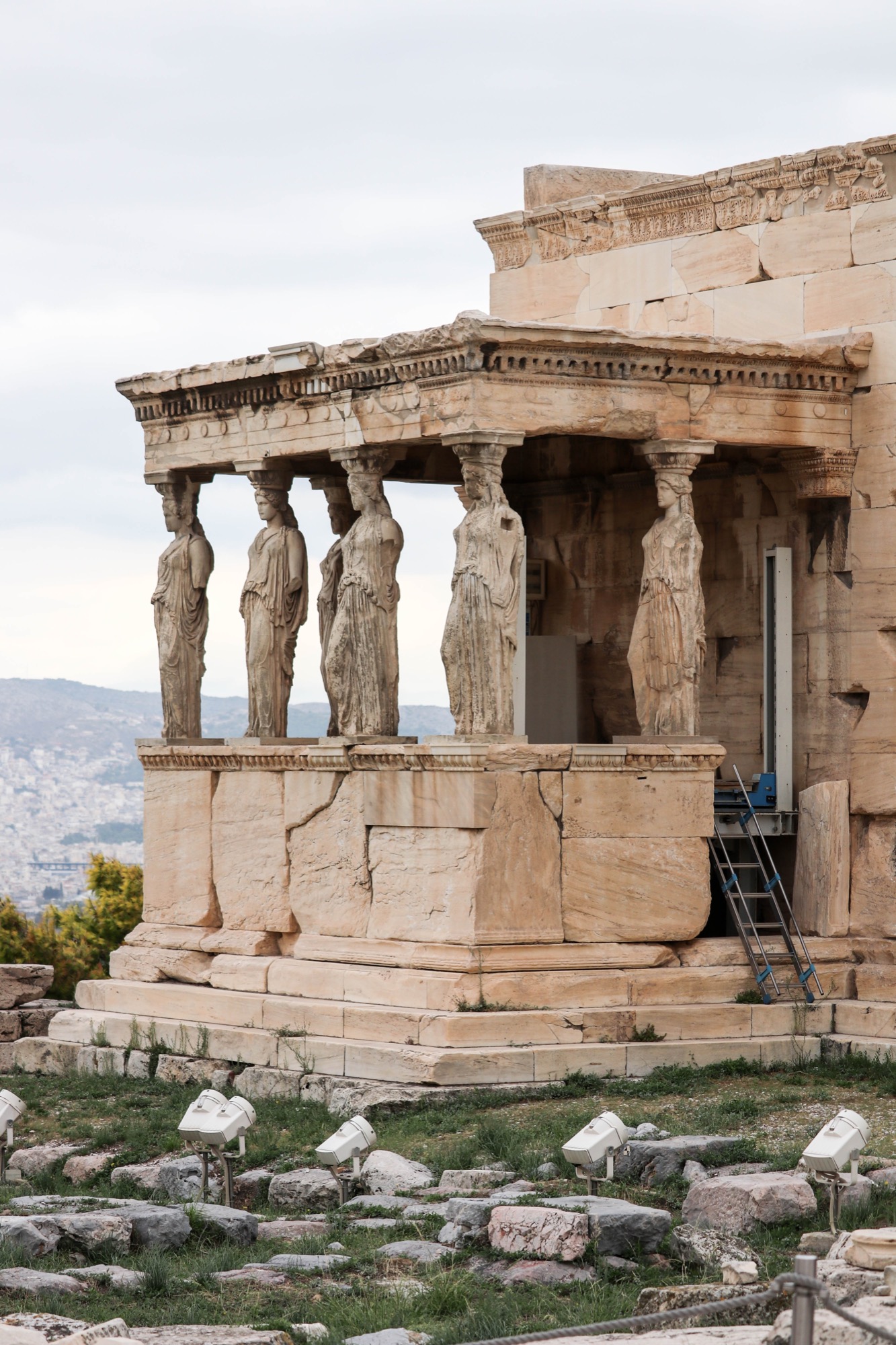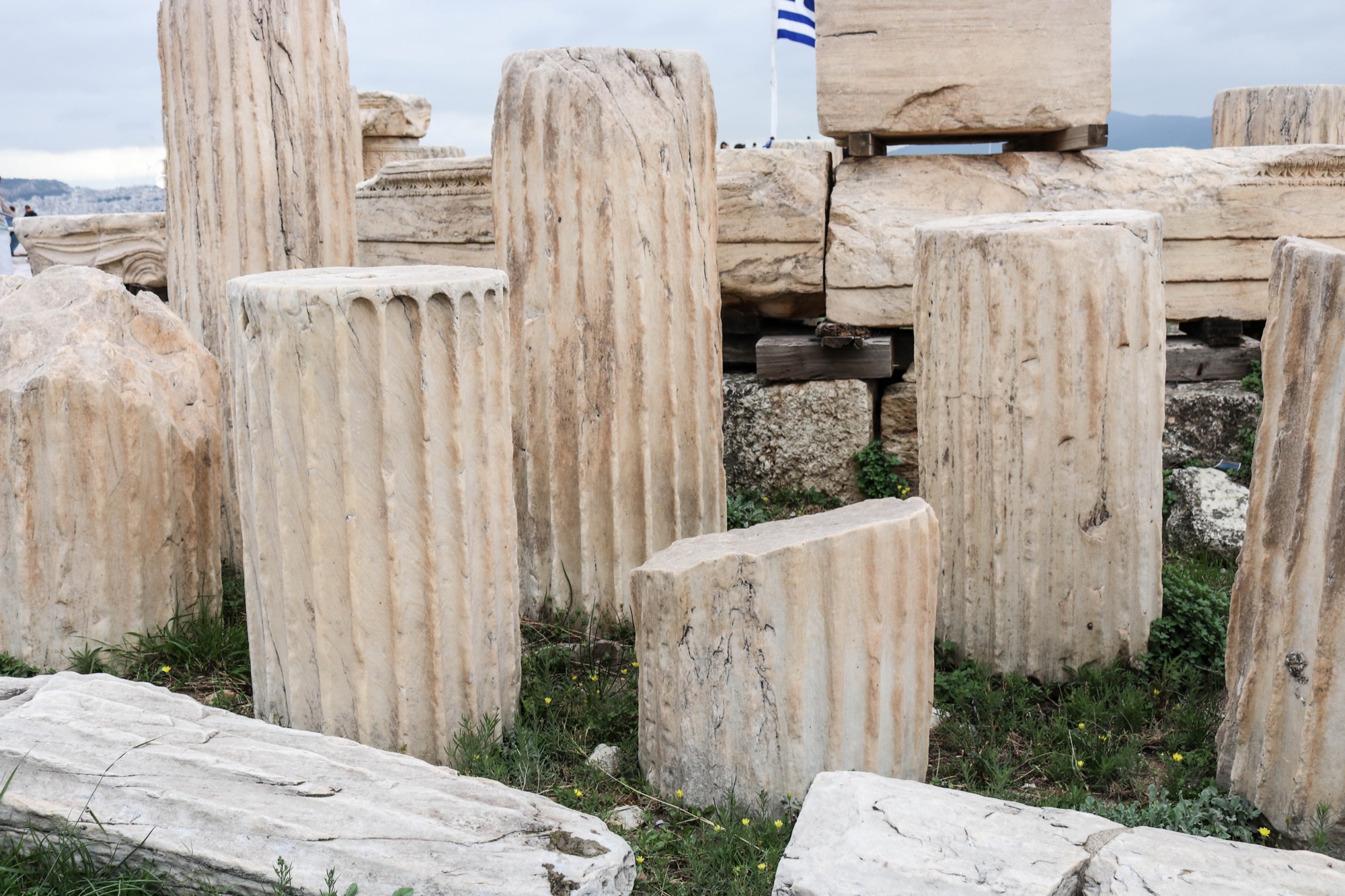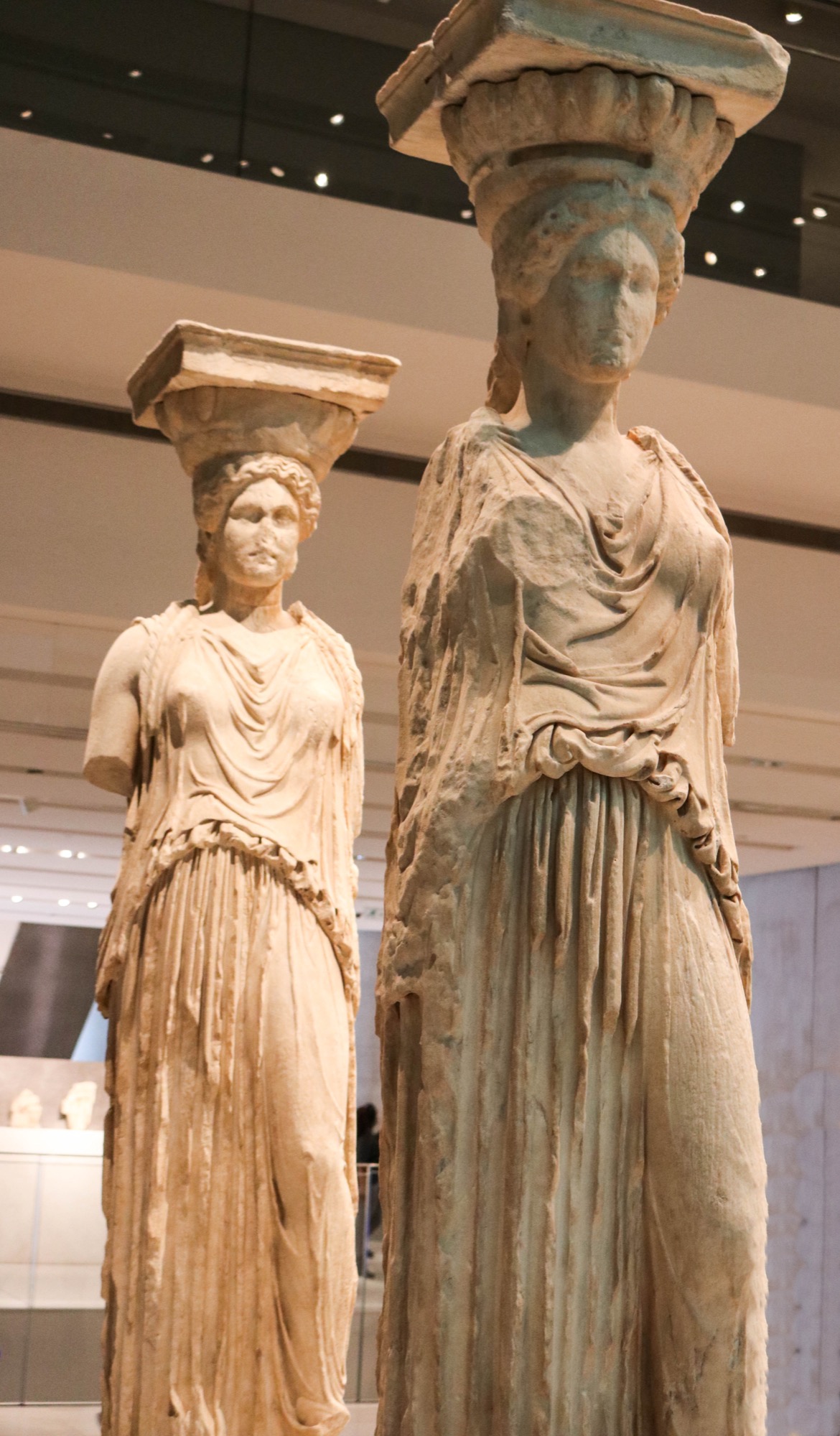Athens is an old city that has many layers of civilization built one on top of the other. The view from the Acropolis provided a window through which we could see some of these layers.
There was a tall beautifully carved obelisk called Philopappos monument on the nearby Hill of Muses. The structure, which was built in 116, is a tomb built for a much beloved city magistrate named Philopappos. The surrounding area is now part of a nature preserve.
The Temple of Hephaestus, named for the patron god of metalworking, craftmanship and fire, was taken over by the Greek Orthodox Church in 700 and used by them until 1834.
The black domed National Observatory of Athens, which was founded in 1842, is the oldest research foundation in Greece.
Hadrian's Gate spanned an ancient road leading to the Temple of the Olympian Zeus. The Temple ruins, which has unusually tall columns, was built over several centuries beginning in 174BC. It was one of the largest temples built in the ancient world.
The more modern parts of the city, with a very dense collection of structures, reveals an eclectic collection of old and new styles spread out as far as the eye can see.

























































